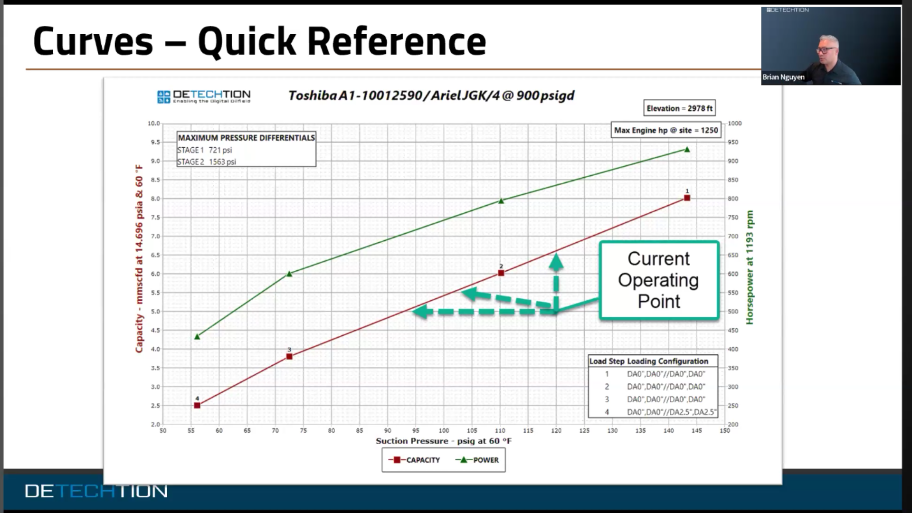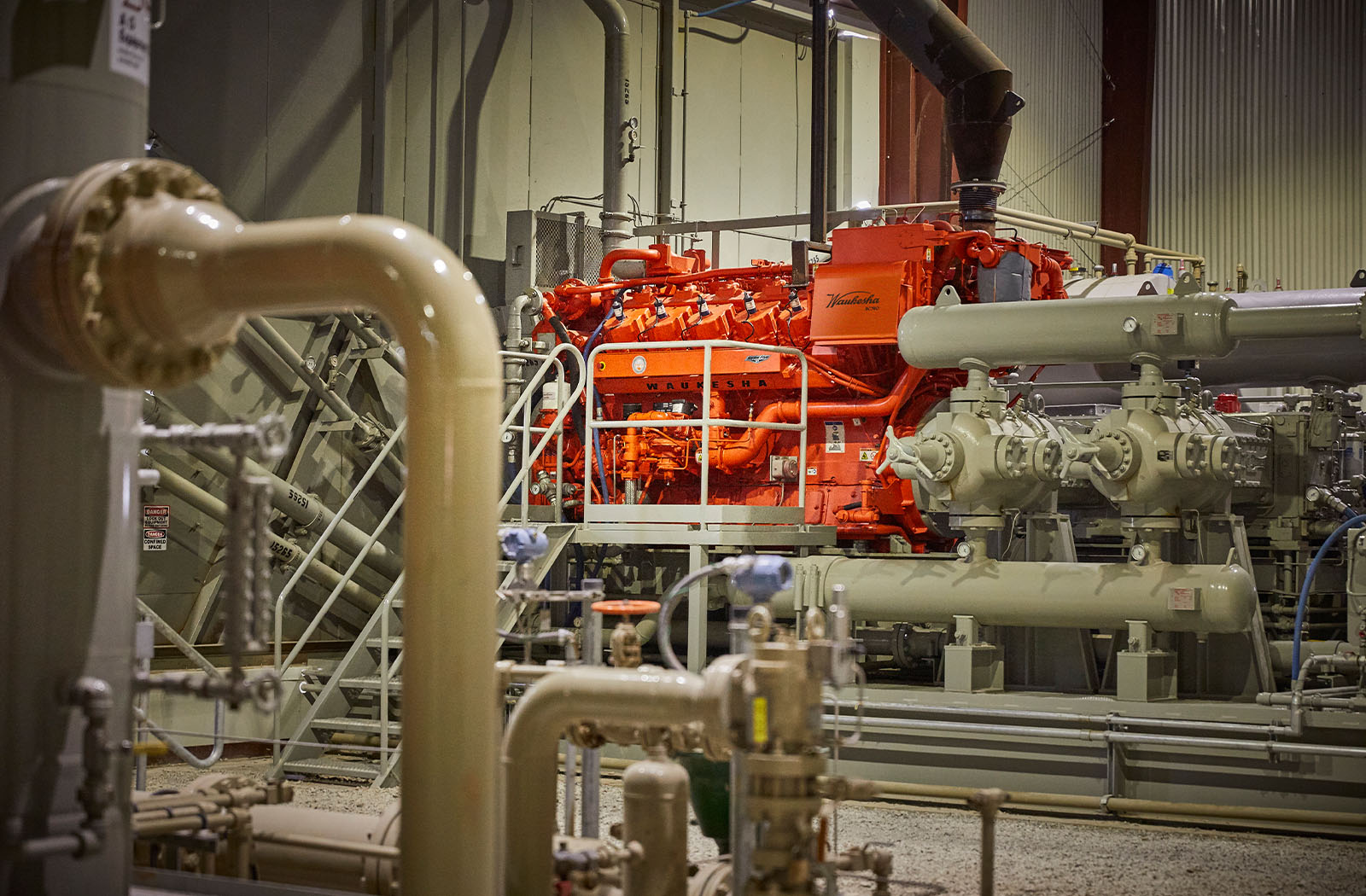Houston, TX |
Introduction
In our previous blog post “BEAT THE HEAT”, we showcased how PID control was used to help prevent asset shutdowns during the heat of the summer months. In this article, we’ll dive deeper into the specific technology and methods used.
In the realm of process automation, precision is paramount. Maintaining control over critical parameters such as pressure, temperature, and flow is essential for optimizing performance and avoiding costly inefficiencies. One of the most widely used methods for achieving this control is PID (Proportional-Integral-Derivative) control. While standard PID control is effective in many applications, complex systems—such as those found in natural gas compressors—often require more advanced strategies. In this blog post, we’ll explore how PID control is leveraged in conjunction with Override and Split Range control techniques to manage the intricate dynamics of compressor systems, ensuring optimal performance and reliability.
Understanding PID Control
Basics of PID Control
PID control is a fundamental control strategy used to maintain a process variable (such as pressure or temperature) at a desired setpoint by continuously adjusting the control variables (such as driver speed, suction control valve position, and recycle control valve position). The PID controller works by calculating an error value, which is the difference between the setpoint and the process variable, and then adjusting the system’s control outputs to minimize this error.
- Proportional (P): The proportional term generates an output that is directly proportional to the current error. A larger error results in a stronger corrective action.
- Integral (I): The integral term addresses the accumulation of past errors by integrating the error over time, helping to eliminate steady-state errors.
- Derivative (D): The derivative term predicts future errors based on the rate of change of the process variable, helping to smooth out the control response and reduce overshoot.
By combining these three elements, PID controllers provide a balanced and responsive control action that is essential for maintaining the stability and efficiency of complex systems.
Limitations of Single PID Loops
While single PID loops are effective for many applications, they can struggle in systems where multiple interacting variables need to be controlled simultaneously. For example, in a natural gas compressor, both suction and discharge pressures must be controlled to ensure efficient operation by preventing shutdowns as gas volumes fluctuate. A single PID loop might not be sufficient to handle the interactions between these variables, leading to gaps in how you may want the asset to perform. This is where advanced control strategies like Override and Split Range control come into play.
Leveraging PID Control in Compressor Systems
In an example compressor system, precise control over variables such as suction pressure, discharge pressure, and intake manifold air temperature (IMAT) is crucial for ensuring safe and efficient operation. To achieve this, we will use an example where we utilize three PID loops—IMAT, Suction, and Discharge—along with Override and Split Range control techniques.
How It Works: PID Loops and MIN Select
In our example compressor system, three separate PID loops are used to monitor and control key variables:
- IMAT PID Loop: This loop monitors the Intake Manifold Air Temperature (IMAT). If the IMAT exceeds its setpoint, the driver speed is reduced to bring the temperature back within the desired range.
- Suction Pressure PID Loop: This loop monitors the suction pressure. If the pressure falls below the setpoint, the driver speed is reduced followed by the opening of the recycle valve to keep the suction pressure above the setpoint to avoid issues such as low volumetric efficiencies. Note that suction pressure is unique in that there is often both a high setpoint and low setpoint. Hitting the high setpoint would trigger the suction control valve to keep the pressure below the threshold.
- Discharge Pressure PID Loop: This loop monitors the discharge pressure. If the discharge pressure exceeds the setpoint, the driver speed is reduced to bring the pressure down to a safe level.
The outputs of these three PID loops are fed into a MIN select block. The MIN select function takes the lowest value from the three PID outputs and uses this value to set the driver speed of the compressor, or in the case of suction pressure, driver speed and recycle valve. This ensures that the most critical condition—whether it be IMAT, suction pressure, or discharge pressure—dictates the overall operation, protecting the system from exceeding any setpoints and maintaining optimal performance.
Override and Split Range Control
Understanding Override Control
Override control is used to prioritize certain control actions based on specific process conditions. In the case of our example compressor system, the Override control strategy ensures that the most critical variable (IMAT, suction, or discharge pressure) takes precedence in setting the driver speed. If any of these variables exceed their setpoints, the system immediately reduces the driver speed to prevent potential damage or inefficiencies.
- Example: If the discharge pressure exceeds its setpoint, the driver speed is reduced until the discharge pressure falls below the setpoint, even if the IMAT and suction pressures are within acceptable ranges. This ensures that the compressor operates safely and within its design limits.

Understanding Split Range Control
Split Range control is a powerful technique that allows a single PID controller to manage multiple control elements in a sequential manner. In compressor systems, this approach is particularly useful when managing capacity control across different operating ranges.
- Example: Consider a compressor equipped with an actuated recycle valve. When implementing low capacity control, Split Range control can be used to effectively manage the system's response. Initially, the PID controller will reduce the compressor’s speed as the primary control action. If further reduction in capacity is needed, the controller will then engage the second control element—the bypass (or recycle) valve—by opening it to redirect excess gas flow back to the suction side of the compressor.
This two-stage approach ensures that the compressor maintains stable operation across a wide range of capacities, avoiding conditions that could lead to inefficiencies or mechanical stress. By utilizing Split Range control, the system dynamically adjusts to changing demands, optimizing performance while minimizing the risk of shutdowns or other operational issues.

Benefits of This Approach
In our example, we used the combination of both Split Control and Override control to ensure safe, reliable operations. Together, these control techniques in compressor systems offers several critical advantages:
- Enhanced Safety and Reliability: Override control ensures that the most critical variable—whether it’s IMAT, suction pressure, or discharge pressure—always takes precedence in controlling the system. This priority-based approach minimizes the risk of operating outside safe parameters, thereby enhancing the overall safety and reliability of the compressor.
- Optimized Performance Across Operating Ranges: Split Range control allows the system to utilize multiple control elements (such as speed reduction and bypass valve operation) in a sequential manner. This ensures smooth and efficient transitions across different operating ranges, optimizing the compressor’s performance even when demand varies significantly.
- Operational Flexibility: The combination of these control strategies provides the flexibility to handle a wide range of operating conditions. Whether the system needs to reduce capacity or prioritize critical parameters, it can dynamically adjust to maintain optimal operation.
- Reduced Wear and Tear: By effectively managing capacity and prioritizing safety, this approach reduces the mechanical stress on the compressor. This leads to lower maintenance requirements and extends the equipment’s lifespan.
Incorporating Multiple Process Variables in Compressor Control Systems
In real-world compressor systems, the control challenges extend far beyond managing a few key variables like IMAT, suction pressure, and discharge pressure. In fact, a comprehensive control strategy might involve monitoring and adjusting over 50 different process variables simultaneously. Each of these variables plays a crucial role in ensuring the compressor operates efficiently, safely, and within its optimal performance range.
- Example: Consider a compressor system equipped with an actuated recycle valve. In this system, low capacity control might use Split Range control with two control elements: initially, the compressor's speed is reduced, and if further capacity reduction is required, the bypass valve opens. However, this is just one aspect of the control strategy. A sophisticated system might also monitor variables such as driver load, engine knock, various temperature points (e.g., jacket water, oil, pre-catalyst, exhaust port), fuel pressure, static and dynamic rod loads, volumetric efficiency, and multiple stage discharge pressures.
The Enbase Advantage: Configuring Unlimited Control Loops with Ease
The Enbase Compressor Control Panel is designed to give users unparalleled flexibility in managing complex compressor systems. Unlike many other solutions that restrict the number of control loops, the Enbase system allows users to easily configure a nearly unlimited number of PID loops. This capability is crucial when dealing with the vast array of process variables present in advanced compressor systems.
With Enbase, you can seamlessly integrate and control a wide range of variables—whether it's monitoring and adjusting temperatures across multiple points, managing dynamic and static rod loads, or fine-tuning volumetric efficiencies. This flexibility ensures that no matter how complex your system, you have the tools to optimize every aspect of its performance.

Putting it all together
In compressor systems, where the complexity of operation often involves monitoring and adjusting over 50 different process variables, the ability to configure a nearly unlimited number of control loops—enabled by the Enbase Compressor Control Panel—sets your operations apart from the competition. This unparalleled flexibility, combined with advanced Override and Split Range control strategies, ensures that the most critical variables are always prioritized, while the system dynamically adjusts to changing conditions through sequential control actions.
By managing a comprehensive set of variables with ease, this control strategy not only optimizes performance but also protects the compressor from potential failures, reducing maintenance costs and extending the life of the equipment. The Enbase solution offers the robust and flexible control needed to achieve precision, reliability, and efficiency in even the most complex operational environments, providing a clear advantage over competitor systems with limited control capabilities.
Call to Action
Interested in learning more about how our compressor control strategies can optimize your operations? Explore our range of technologies, including Enbase and Enalysis, which integrate advanced PID control to ensure the highest levels of performance and safety. Contact us today to schedule a demo.


